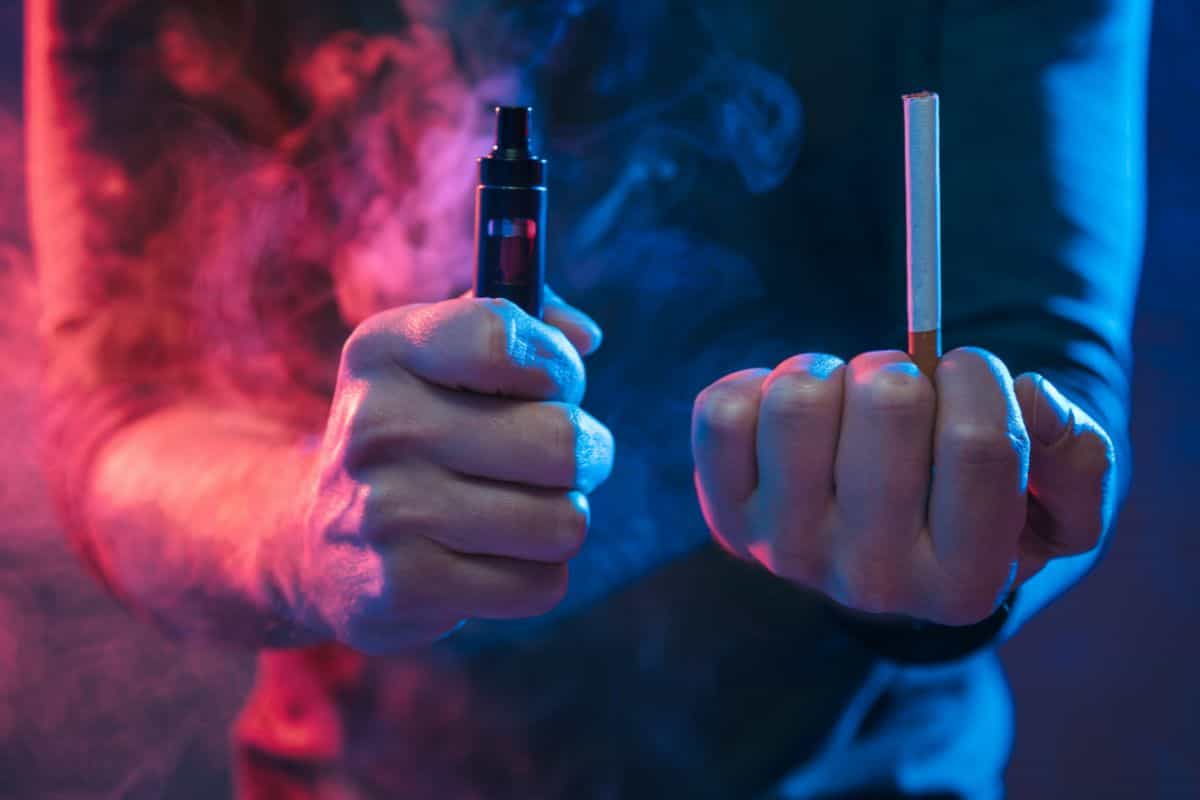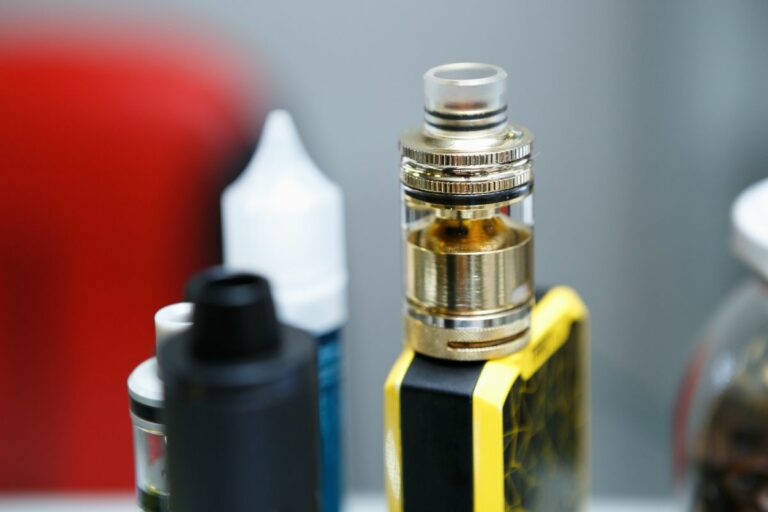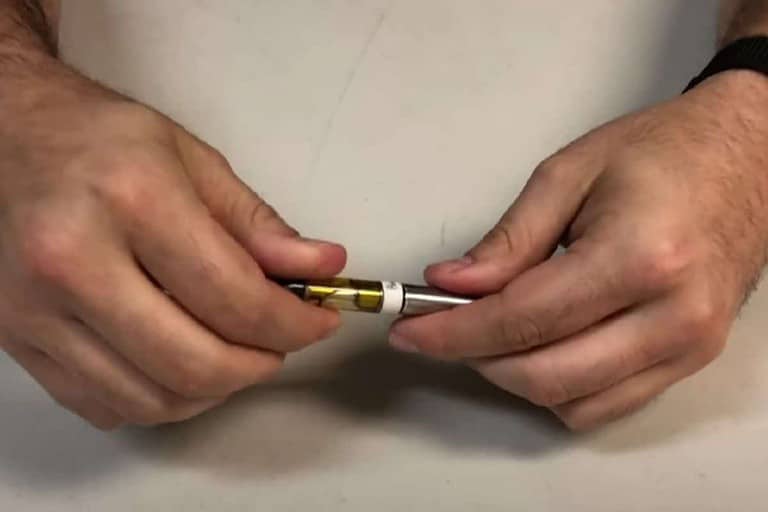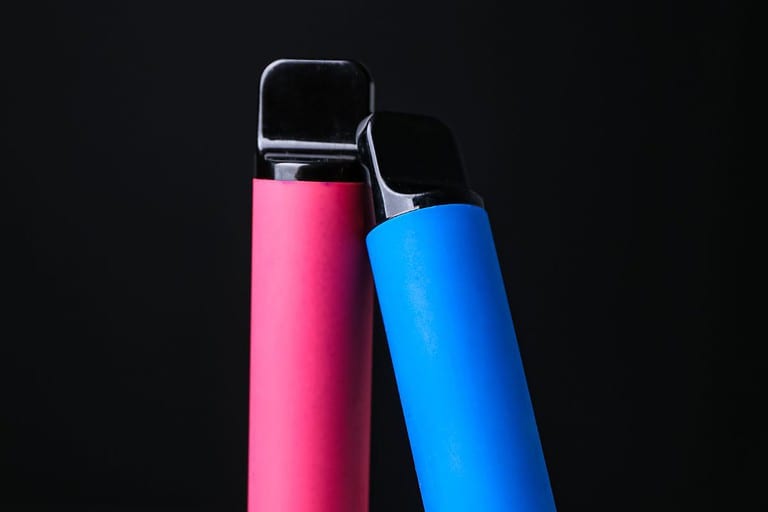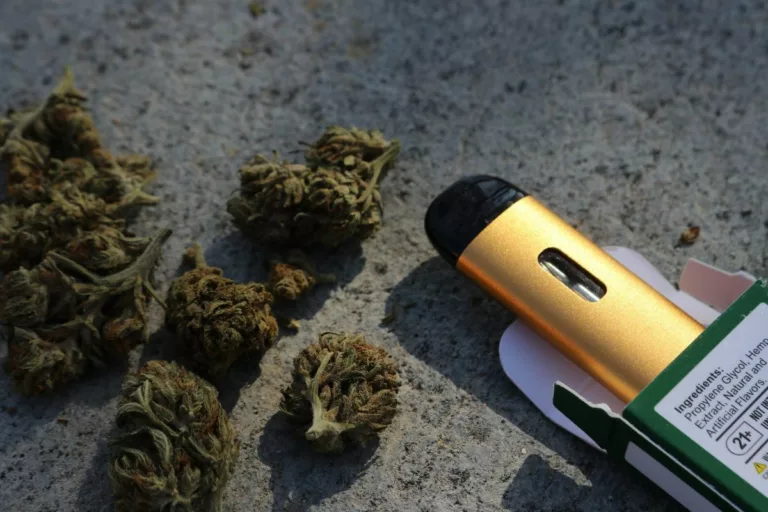How Many Cigarettes is 1000 Puffs: Understanding Vape to Cigarette Conversion
Understanding the equivalence between the number of puffs from e-cigarettes and the number of traditional cigarettes is crucial for evaluating usage patterns and potential health implications. When you think about consuming 1000 puffs of an e-cigarette, it’s not straightforward to equate this to the number of traditional cigarettes smoked. This is due to the differences in duration and volume of puffs between individual smokers, differences between devices, and the varying concentrations of nicotine.
A key study Real-time characterization of e-cigarettes use: the 1 million puffs study provides insights into the patterns of e-cigarette usage, demonstrating the complexity behind determining how many e-cigarette puffs equal smoking a set number of traditional cigarettes. Additional factors such as the nicotine content of the e-liquid, the vaping device’s power setting, and an individual’s smoking behavior must all be considered to make an accurate assessment.
NEW CUSTOMER DISCOUNT
Save 15%
15% OFF YOUR ENTIRE ORDER FOR NEW CUSTOMERS USE CODE WELCOME15!
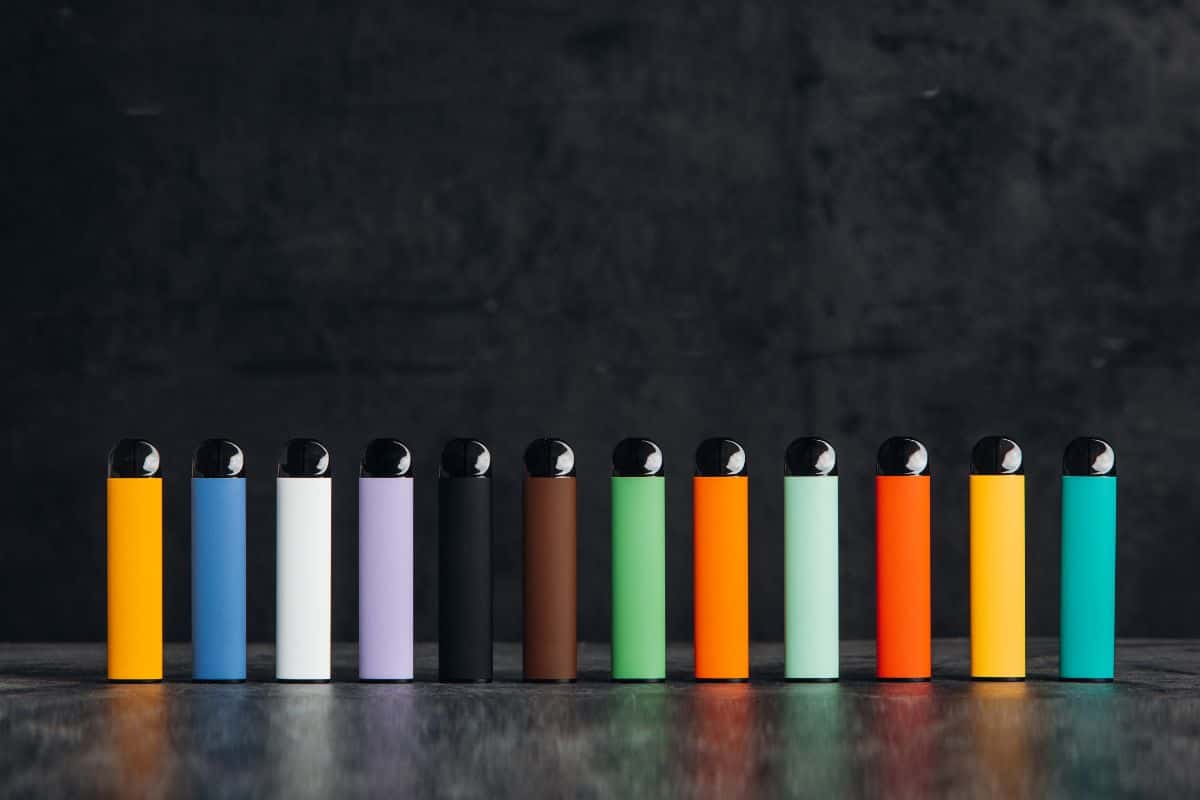
While directly comparing vaping to smoking in terms of puff count is complex, it is acknowledged that vaping doesn’t produce tar or carbon monoxide, two harmful constituents of cigarette smoke. However, health concerns associated with e-cigarettes still exist, as indicated by studies on how mentholated cigarettes can affect puff volume and carbon monoxide absorption. Your understanding of the equivalency needs to take into account your own vaping or smoking habits, as well as the specific attributes of the products you are using.
Table of Contents
Understanding Puff Equivalence

When considering the equivalence of puffs to cigarettes, it’s essential to examine the puff count to cigarettes conversion and the nicotine content in each. These factors help you understand how many cigarettes are roughly equivalent to 1,000 puffs.
Puff Count to Cigarettes Conversion
To convert puff count to the number of cigarettes, one must consider the average number of puffs a smoker gets from a single cigarette. Research indicates that a cigarette typically offers 10 to 15 puffs. Here’s a simplified calculation:
- 10 puffs per cigarette: 1,000 puffs / 10 puffs = 100 cigarettes
- 15 puffs per cigarette: 1,000 puffs / 15 puffs = 66.67 cigarettes
Therefore, if you’re using an e-cigarette or vape, 1,000 puffs is approximately equivalent to smoking 66 to 100 traditional cigarettes, depending on your smoking style.
Nicotine Content in Puffs vs. Cigarettes
The nicotine content in puffs compared to that of cigarettes can vary widely based on the nicotine strength in the e-liquid and the type of cigarette. A typical cigarette contains about 1 to 2 mg of absorbed nicotine. In contrast, e-cigarettes can vary significantly as they come in various nicotine strengths, which can range from 0 mg up to 36 mg per mL of e-liquid.
To estimate your nicotine exposure from 1,000 puffs, you’ll need to consider these factors:
- Nicotine strength in e-liquid: Check the label for mg/mL
- Volume of e-liquid per puff: Averages at about 0.1 mL
For example, using a 6 mg/mL nicotine e-liquid at 0.1 mL per puff:
- Nicotine per puff: 6 mg/mL * 0.1 mL = 0.6 mg
- Total nicotine for 1,000 puffs: 0.6 mg * 1,000 = 600 mg
This basic calculation doesn’t account for the absorption rate of nicotine, which can differ between smoking and vaping, but it provides a way to gauge your nicotine intake from puffs relative to traditional cigarettes.
E-cigarette Basics
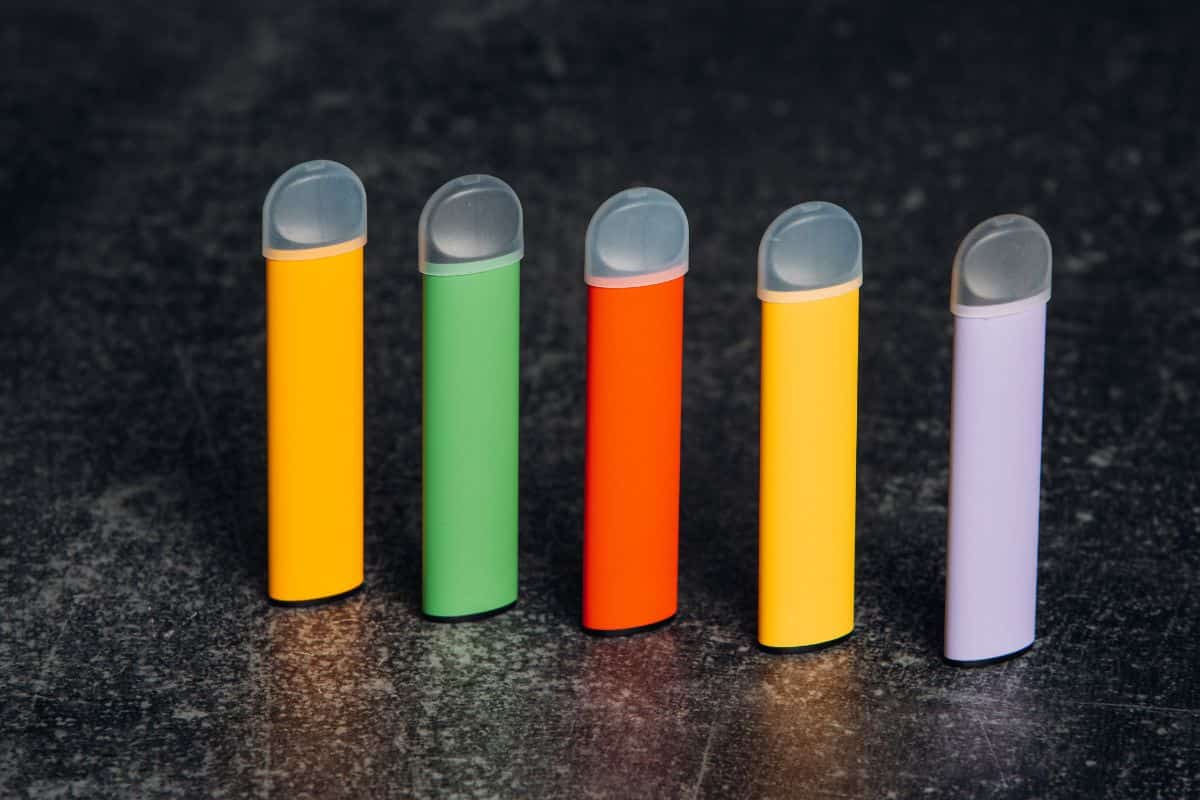
When considering the shift from regular cigarettes to electronic ones, it’s essential for you to understand the fundamental aspects of e-cigarettes, including their design and the composition of the liquids they vaporize.
Device Types
E-cigarettes, also known as vapes, come in a variety of device types tailored to user preference and experience level. The primary categories include:
- Cig-a-likes: These resemble traditional cigarettes and are typically used by those new to vaping. They have small batteries and can be disposable or rechargeable.
- Vape Pens: Larger than cig-a-likes, vape pens have a pen-like shape and offer more battery life and e-liquid capacity.
- Pod Systems: These are compact devices that use pre-filled or refillable pods, popular for their ease of use.
- Box Mods: Advanced devices that provide customizable settings, including temperature and wattage control, for an enhanced vaping experience.
E-liquid Composition
The e-liquid or “juice” used in your e-cigarette is a solution that typically consists of the following components:
- Propylene Glycol (PG): A carrier fluid that helps to produce what you perceive as ‘throat hit’.
- Vegetable Glycerin (VG): Provides the vapor that mimics smoke and adds a subtle sweetness.
- Nicotine: The addictive substance found in traditional cigarettes, present in various concentrations to meet your preferences or goals for nicotine intake.
- Flavoring: Chemicals or natural substances that give the vapor a particular taste.
Remember, the nicotine content in the e-liquid of your vape can vary greatly, allowing you to choose levels that can range from zero nicotine up to levels comparable with traditional cigarettes. The concentration of nicotine in your e-liquid directly affects the number of puffs equivalent to smoking a certain number of cigarettes.
Health Considerations

Understanding the health implications of smoking and vaping is crucial when you consider using these products. Here, you will find specific information on the health risks associated with both traditional smoking and the use of e-cigarettes, the role of nicotine, and the impact of various chemicals found in these products.
Comparing Health Risks
Traditional Cigarettes: A single cigarette typically contains about 10-15 puffs, which means 1000 puffs equals approximately 66-100 cigarettes depending on your smoking style. The health risks of smoking cigarettes are well-documented, including increased risk of cancers, heart disease, stroke, and lung diseases.
Vaping: E-cigarettes are marketed as a less harmful alternative to traditional cigarettes because they generate an aerosol by heating a liquid that usually contains nicotine, flavorings, and other chemicals. Some studies suggest lower health risks for vaping compared to smoking; however, the long-term effects are not yet fully understood.
Nicotine Intake and Addiction
Nicotine Dosage: Considering 1000 puffs, the amount of nicotine you would ingest can vary drastically. Traditional cigarettes deliver about 1 mg of nicotine each, whereas e-cigarettes can vary based on the liquid’s nicotine concentration. Nicotine is a highly addictive substance and can lead to nicotine addiction, keeping users tied to the habit due to its addictive properties, regardless of the delivery system.
Impact of Chemicals in Vaping
While vaping reduces exposure to tar – the main culprit of smoking-related diseases – it is not without other chemical concerns. E-cigarettes contain various potentially harmful chemicals such as benzene and formaldehyde. These toxic chemicals have been linked to health risks such as respiratory issues and other diseases. The impact of these chemicals can become exacerbated with higher numbers of puffs, indicating a potential risk with high usage of e-cigarettes.
Vaping as a Smoking Alternative

| Aspect | Vaping | Traditional Smoking |
|---|---|---|
| Health Impact | Generally considered less harmful than smoking tobacco. Fewer toxins and carcinogens, but long-term effects are still being studied. | Known to cause various health issues, including cancer, respiratory problems, and heart disease. High risk of addiction. |
| Nicotine Content | Variable nicotine levels, allowing users to control and gradually reduce their nicotine intake. | Consistent and often high nicotine levels, leading to addiction. |
| Secondhand Smoke | Produces vapor, which is generally less harmful than secondhand smoke from combustible cigarettes. | Generates harmful secondhand smoke, exposing others to toxins and carcinogens. |
| Odor | Vapor usually has a less intense smell than cigarette smoke. | Leaves a strong and lingering odor on clothing, breath, and surroundings. |
| Availability of Flavors | Wide variety of flavors, appealing to different preferences. | Limited flavors in traditional tobacco products. |
| Cost | Initial costs for devices can be high, but ongoing costs may be lower than smoking. | Continuous expenses with regular purchases of cigarettes. |
| Social Acceptance | Vaping may be more socially accepted in some circles, but opinions vary. | Smoking is increasingly socially stigmatized in many places. |
| Regulation | Regulations are evolving; restrictions on sales to minors and advertising are common. | Highly regulated, with strict restrictions on sales, advertising, and public use. |
In exploring vaping as an alternative to smoking, it’s critical to understand how it can serve as a transitional method and its effectiveness in nicotine delivery.
Transition from Smoking to Vaping
You may consider vaping as a means to transition from traditional cigarette smoking. The shift often involves a gradual reduction in the use of cigarettes, as vaping habits can mimic the physical action of smoking which some find helpful during the transition. Studies reflect that users often experience a decrease in smoking frequency when initiating use of a connected e-cigarette, implying that vaping can play a role in altering smoking habits.
Nicotine Delivery Systems
Vaping devices vary in the way they deliver nicotine. These nicotine delivery systems are designed to provide you with control over nicotine intake. Compared to traditional cigarettes, electronic cigarettes may offer a safer avenue due to the absence of tobacco combustion. The timing and duration of puffs can be controlled, allowing you to manage nicotine levels to better suit your quitting smoking goals.
Understanding these factors is crucial whether you are considering vaping as a stepping stone away from cigarettes or are interested in how vaping may compare as a nicotine delivery method.
Consumer Information
In this section, you will find targeted advice to help you make informed decisions regarding e-cigarette products, focusing on nicotine strength, types of disposable vapes, and the variety of flavors and aromas available.
Choosing the Right Nicotine Strength
When selecting vape juice, it is crucial to choose a nicotine strength that aligns with your needs. If you’re a heavy smoker looking to transition to vaping, a higher nicotine strength might be required. Conversely, if you’re a light smoker or aiming to reduce your nicotine intake, lower nicotine levels would be more appropriate. Here’s a quick guide:
- Heavy Smokers (more than a pack a day): Consider vape juice with 18-24 mg of nicotine.
- Regular Smokers (about a pack a day): 12-18 mg may suffice.
- Light Smokers: Lower nicotine options, such as 3-6 mg, are often sufficient.
Understanding Disposable Vapes
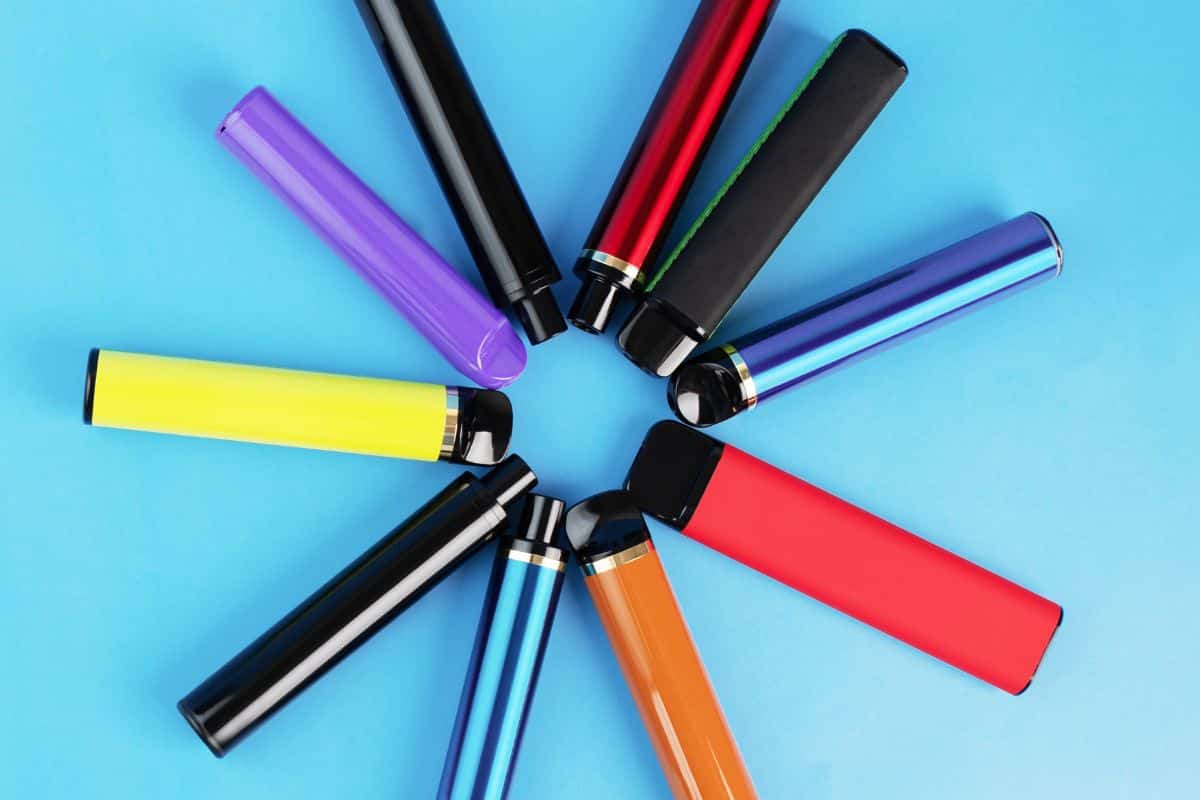
Disposable e-cigarettes are convenient options for smokers transitioning to vaping or vapers seeking simplicity. You should know that a single disposable vape can vary widely in the number of puffs it provides. A figure like ‘1000 puffs’ is an approximation and actual usage may differ based on the duration and intensity of each puff. Additionally, disposable vapes do not require refilling or recharging, making them a hassle-free choice.
Flavor and Aroma Options
Your vaping experience can be significantly enhanced by the flavor and aroma of the vape juice. Disposable vapes and e-liquids come in an extensive range of flavors, from classic tobacco to exotic fruits or dessert-inspired varieties. When choosing a flavor:
- Consider the smell: Vapors will carry a scent that contributes to the experience.
- Know your preference: Whether you enjoy strong, bold tastes or subtle, smooth flavors, there’s an option for you.
Remember, the number of puffs you get from any e-cigarette will depend on personal use patterns, and the ‘1000 puffs’ are not directly equivalent to a specific number of traditional cigarettes. Your experience with disposable vapes and deciding on the appropriate nicotine strength and flavor is subjective and should be tailored to suit your preferences and goals.
Frequently Asked Questions
In exploring the relationship between vape puffs and traditional cigarettes, it’s essential to understand the conversion metrics used by health experts and the vaping community for clarity and harm reduction.
What is the equivalent number of cigarettes to a disposable vape with 1000 puffs?
The equivalent number of cigarettes for a disposable vape with 1000 puffs varies, but it is roughly equivalent to a pack of cigarettes, which typically contains 20 cigarettes. Each puff from a vape can be estimated to be around the same amount of nicotine as a puff from a cigarette, but this can change based on the vape’s nicotine content and the user’s inhalation pattern.
How does the number of puffs from a vape compare to smoking a pack of cigarettes?
The comparison of puffs from a vape to smoking a pack of cigarettes hinges on the understanding that one traditional cigarette is approximately equivalent to 10 puffs from a vape. Therefore, a pack of 20 cigarettes corresponds to about 200 puffs from a vape.
What is the conversion ratio between puffs of a 20mg vape and cigarettes?
For a 20mg nicotine vape, the conversion ratio to traditional cigarettes can be considered on the basis of nicotine delivery. With e-cigarettes having varying nicotine delivery efficiencies, it is generally thought that 1ml of e-liquid in a vape, at 20mg strength, is comparable in nicotine content to about one pack of cigarettes.
Can we equate vape puffs directly to the number of cigarettes smoked?
While vape puffs can be equated to cigarettes smoked in terms of nicotine exposure, it does not translate directly due to differences in absorption and inhalation patterns. It’s more complex than a simple 1:1 ratio, making it important to consider the individual vaping device and user behavior.
For vapers, how many puffs are generally considered equal to one cigarette?
Generally, for vapers, approximately 10 puffs on a vape are equated to one traditional cigarette. However, this is a rough estimate and may vary based on the specific vaping device and the personal usage patterns of the individual.
Is there a standard conversion for equating puffs from high-capacity (5000+) disposable vapes to cigarettes?
There is no standard conversion for equating puffs from high-capacity disposable vapes to cigarettes because the nicotine concentration in e-liquids and the efficiency of different vaping devices can vary greatly. Users often have to refer to the manufacturer’s information on equivalent cigarette consumption for guidance.

